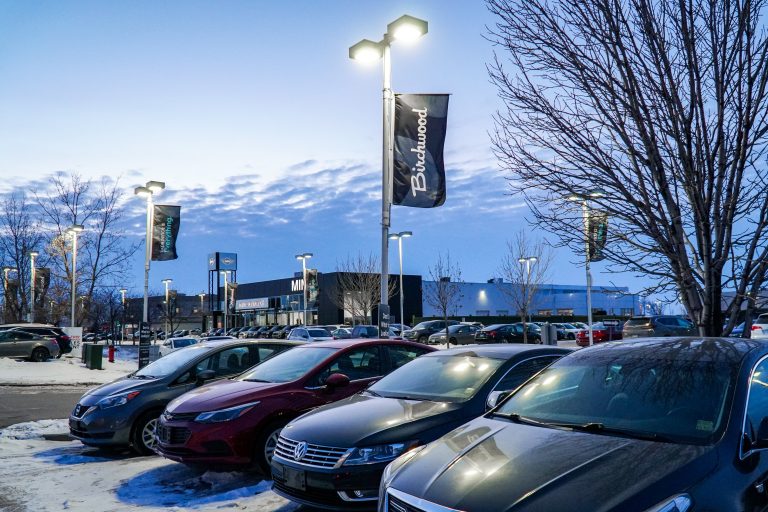When buying or trading in a vehicle, depreciation can play a huge role in the vehicle’s value. Depreciation is the decrease in a car’s value over time, affected by various factors such as age, mileage, condition, and market demand. Let’s dive into how depreciation works and some tips for estimating a car’s future value!
What Is Vehicle Depreciation?
Depreciation is the decline in a vehicle’s value from its original purchase price. Meaning that it’s the amount of value your car loses over time. Typically, a car’s value drops the most in the first few years, with the highest depreciation happening right after you drive it off the lot.
Why Does Depreciation Happen?
Depreciation is influenced by several factors, including:
- Vehicle age: New cars lose value faster, with the steepest depreciation in the first few years.
- Mileage: Higher mileage can lower a car’s value because it may have more wear and tear from frequent driving.
- Condition: Vehicles in good condition depreciate slower, while those with mechanical or exterior issues lose value faster.
- Market demand: Certain makes and models hold value better due to their reputation for reliability and desirability.
- Technology and features: Outdated technology or missing safety features can lower resale value over time.
Depreciation in New Vs. Used Vehicles
To understand how depreciation impacts new and used cars differently, let’s look at two scenarios: buying a new car vs. buying a 3-year-old used car.
1. New Vehicles
New cars depreciate the fastest in the first few years after their purchase. Suppose you buy a new sedan for $30,000. In the first year alone, the car may lose around 20% of its value, making it worth approximately $24,000. By the end of the third year, depreciation slows but is still significant, with the car typically worth about 60% of its original value, equalling around $18,000. So, in three years, the car has lost about $12,000 in value.
2. Used Vehicles
Used vehicles typically depreciate slower, because the highest depreciation happened when it was new. Let’s consider a used version of the same sedan, bought at 3 years old for $18,000. Since the initial steep depreciation period has passed, the rate of depreciation will be lower moving forward. Over the next three years, this vehicle might only depreciate by an additional 30%, bringing its value down to around $12,600. Buying a used car can often mean a slower depreciation rate and lower overall loss in value over time.
These examples show that depreciation is steeper for new cars and more gradual for used cars, depending on the vehicle. Buyers looking to avoid significant depreciation may benefit from choosing a used vehicle that has already experienced its initial value drop.
Online Tools to Estimate Vehicle Depreciation
If you’re curious about how a specific make and model might depreciate, there are several online car depreciation calculators available that can help you estimate a vehicle’s future value. These tools consider factors like the car’s age, mileage, condition, and demand to give you an estimated depreciation timeline.
Kelley Blue Book (KBB)
Kelley Blue Book is a trusted source for determining car value. Its depreciation calculator provides estimated resale values for specific makes and models, considering various factors such as age, mileage, and condition.
Car Edge
The Car Edge Depreciation Calculator lets you to see the expected resale value of over 300 models of vehicles. You will get custom results when filling the vehicle information.
VinAudit
VinAudit provides detailed reports on a vehicle’s depreciation based on its VIN number, allowing you to see depreciation trends for specific vehicles rather than general models.
Birchwood
If you’re interested in trading-in your vehicle, Birchwood offers an online tool to estimate your trade-in value!
How to Minimize Depreciation Impact When Buying or Trading-In
Consider Buying Used
Since new cars depreciate quickly, buying a 2–3-year-old vehicle can help you avoid the initial drop in value. This approach gives you a relatively new car with many years of life, while depreciation levels off.
Choose Vehicles with High Resale Value
Some brands are known for holding their value better than others. Brands like Toyota and Honda are popular choices for strong resale value.
Maintain Your Vehicle
Keep up with regular maintenance and repairs. A well-maintained vehicle with detailed service records can depreciate slower and have a higher resale price.
Consider the Timing of Your Purchase
Vehicles tend to depreciate less during peak buying seasons, like tax season in spring. Selling or trading in a car during these times might give you a better value.
Limit Mileage
High mileage accelerates depreciation, so if you can keep your mileage lower, your vehicle will likely retain its value longer.

Whether you’re buying new or used, knowing a vehicle’s depreciation will help you make a purchase that retains as much value as possible, allowing you to get the most out of your investment. Get your trade-in value today with Birchwood!


